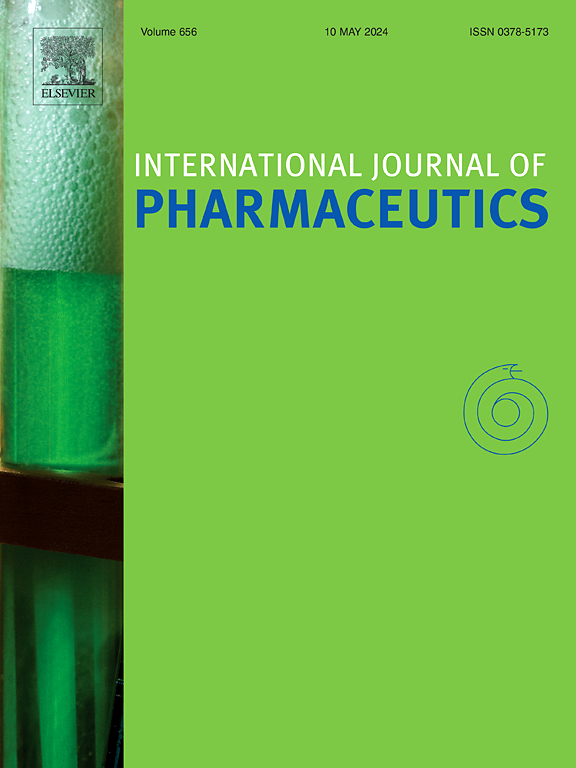Amoxicillin-loaded polycaprolactone-gelatin nanofiber/net (NFN) matrices for pneumothorax treatment
IF 5.3
2区 医学
Q1 PHARMACOLOGY & PHARMACY
引用次数: 0
Abstract
The recurrence rate of spontaneous pneumothorax (collapsed lung) is 30 % after basic conservative treatments, and it can reach up to 20 % after surgery due to the limited effectiveness of current surgical techniques. This highlights the need for the development of new, effective treatment approaches supported by biomaterials. Therefore, we aimed to develop a biomaterial that does not restrict the aerodynamic movements of the lungs, is resistant to lung pressure, and can withstand the movements during inhalation and exhalation,to prevent and treat pneumothorax recurrence. For this purpose, biodegradable matrices were prepared using polycaprolactone (PCL), gelatin (GEL), and amoxicillin (AMX), which is a broad-spectrum antibiotic. The matrices were designed with a nanofiber/net (NFN) structure, targeting appropriate degradation rates and mechanical strength. NFN matrices with randomly arranged and bead-free fibers were produced by electrospinning PCL/GEL and PCL/GEL-AMX solutions in different ratios. The incorporation of AMX reduced the fiber diameter, while the addition of GEL increased the fiber diameters, resulting in fibrous matrices with diameters ranging from 194 nm to 1,100 nm. Additionally, adding GEL and/or AMX to the structure caused the fiber surfaces to resemble tree bark, and spider web-like nano networks formed between the fibers. These formations were particularly homogeneous and dense in the (7:3) PCL/GEL-5AMX group. Energy dispersive X-ray (EDX) analysis showed that the elemental composition of the fibers and the nano-networks was similar. The elastic moduli of the matrix groups ranged from 3.97 ± 0.74 MPa to 19.02 ± 1.91 MPa, which was found to be suitable for the target range for lung tissue. Hydrolytic degradation studies indicated that nano-networks remained present in the structure after 5 weeks, and 55–68 % of the loaded AMX was released within 14 days. In the AMX-loaded groups, both Escherichia coli (E. coli) and Streptococcus aureus (S. aureus) growth were inhibited, with the most effective inhibition observed in the (7:3) PCL/GEL-5AMX group. In conclusion, it was assessed that the spider web-like nano-networks, which increased with the GEL and AMX ratio in the solution, mimicked the structure of lung alveoli at the nanoscale due to their large surface area and small pore size between the fibers. Particularly, the (7:3) PCL/GEL-5AMX NFN matrix could be used as a new and effective alternative material in pneumothorax therapy.

求助全文
约1分钟内获得全文
求助全文
来源期刊
CiteScore
10.70
自引率
8.60%
发文量
951
审稿时长
72 days
期刊介绍:
The International Journal of Pharmaceutics is the third most cited journal in the "Pharmacy & Pharmacology" category out of 366 journals, being the true home for pharmaceutical scientists concerned with the physical, chemical and biological properties of devices and delivery systems for drugs, vaccines and biologicals, including their design, manufacture and evaluation. This includes evaluation of the properties of drugs, excipients such as surfactants and polymers and novel materials. The journal has special sections on pharmaceutical nanotechnology and personalized medicines, and publishes research papers, reviews, commentaries and letters to the editor as well as special issues.

 求助内容:
求助内容: 应助结果提醒方式:
应助结果提醒方式:


